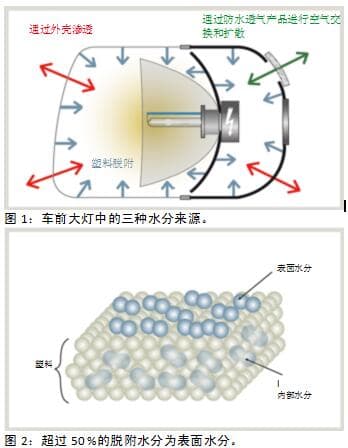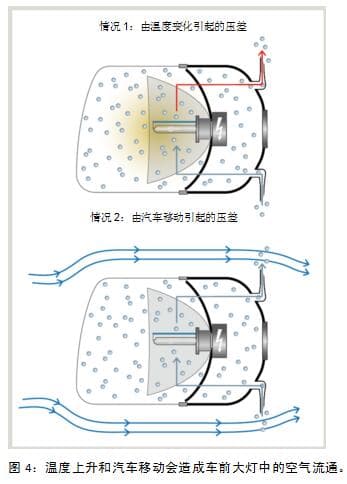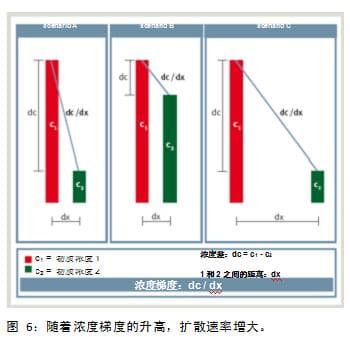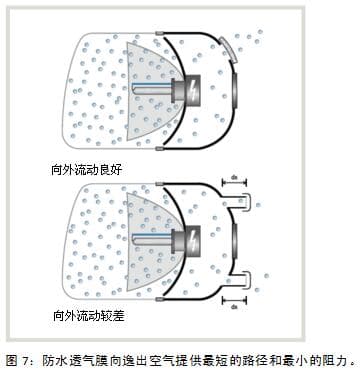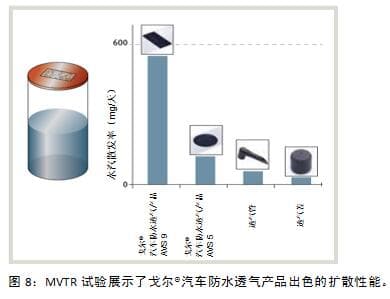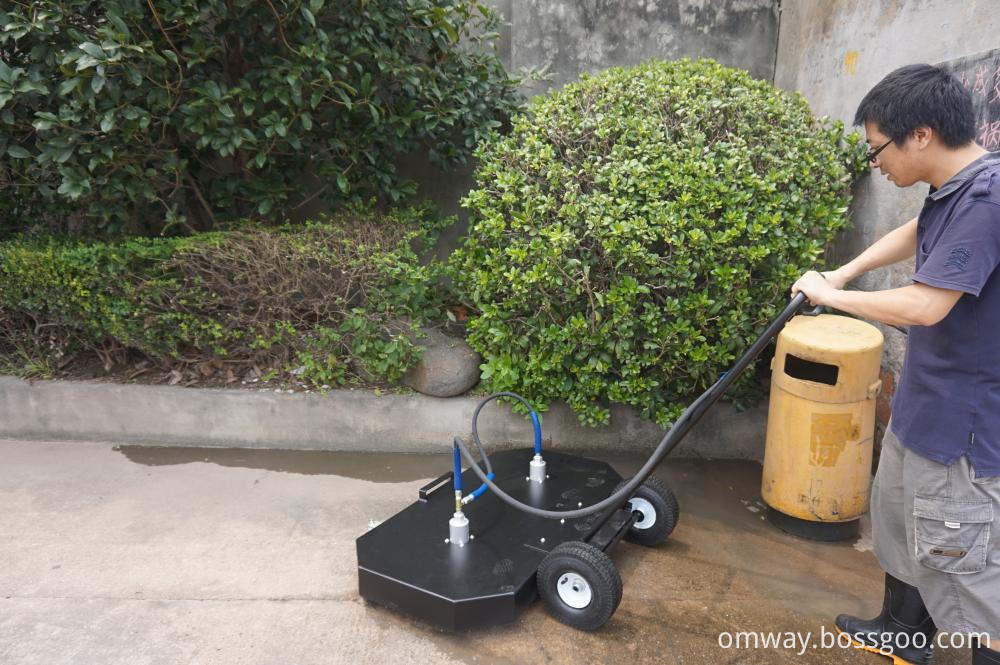Abstract : Headlights face changing environmental conditions while driving. They are only protected from dust, dirt, sediment and condensation to maintain efficient work. In response to these challenges, automakers and suppliers are beginning to adopt innovative and reliable waterproof and breathable solutions to prevent dirt from entering the headlights while maintaining excellent breathability over the life of the car . Through modeling and experimentation, this paper proves the advantages of Gore's waterproof and breathable membrane made of expanded polytetrafluoroethylene (ePTFE) compared to the venting cap and venting tube, thus making it an effective protection for the front of the car. An ideal solution for lights. Keywords : headlights, waterproof and breathable, Gore, expanded PTFE text: The headlights of a car are like people's eyes: once a problem occurs, it will affect the safety of driving at night or on a rainy day. In the daily driving process, the headlights are faced with changing environmental conditions. Whether it is ordinary halogen headlights, headlights with LED lights, or xenon headlights, they must be protected from dust and dirt. The effects of sediments and condensation can always give the driver a clear view. In order to protect the headlights reliably, how to prevent the condensation inside and prevent the ingress of dirt and water while balancing the pressure inside the lampshade is a problem that has long plagued car manufacturers and suppliers. Three kinds of water sources There are three main sources of moisture in the headlights (Fig. 1), the most common of which is the desorption caused by the temperature difference. When the light source is turned off, the temperature drops, and the plastic headlights absorb the moisture like a sponge. When the light source is turned on again, the temperature rises and the accumulated moisture is released from the plastic (Figure 2). At the same time, an increase in the dew point will result in condensation at the lowest temperature of the headlights. The next time the light source is turned off, the temperature drops and the plastic absorbs moisture again. The moisture produced in this process accounts for about 80% of the moisture of the headlights. The second source of moisture is infiltration. During this process, the external water vapor diffuses through the plastic for a long time and enters the inside of the casing. The third source of moisture is the waterproof, breathable product itself – moisture can pass through the headlights. Measuring moisture Although the moisture content of the headlights is usually expressed in terms of relative humidity, since it does not depend on the temperature at the time, the specified dew point is actually more accurate and useful. This will be explained in detail in the example below, which shows the correlation between dew point and temperature. In this example, moisture was measured under laboratory conditions. The dew point was 11 °C at 22 °C and 50% relative humidity (Figure 3). If the temperature drops to 15 °C, the relative humidity will rise to 77%. The dew point remains the same. At a temperature of 11 °C, the relative humidity reaches 100%, which means that the air is saturated and cannot absorb more water. If the temperature drops below the dew point, condensation will occur. Remove external moisture by convection or diffusion In general, there are two ways to remove moisture and achieve ventilation of the headlights: convection and diffusion. As used herein, convection refers to open, lateral ventilation and operation using at least two venting tubes to remove external moisture by air circulation. This process is triggered by a pressure differential caused by the movement when the temperature is raised (for example, when the headlights are turned on) or when the vehicle is running. These differential pressures create airflow with external humid air (Figure 4). Ambient air is drawn in through the lower opening and flows out again through the upper opening. However, the disadvantage of this open waterproof and ventilating solution is that dust, dirt particles, insects, etc., also enter the headlights along with the inhaled air. Similarly, convection only works when the car is driving or the headlights are turned on. In addition to this, it is also a problem that a large amount of components are accumulated in the engine compartment, so that air often cannot flow to a desired area around the headlights. The more effective way to remove the moisture from the headlights is actually diffusion. The physical process is actually the movement of water vapor from a high concentration zone to a low concentration zone. The law of diffusion details this movement: vD = -D * A * dc/dx, where vD is the diffusion rate and D is the diffusion constant. Obviously, to increase the diffusion rate, the effective method is to increase the exchange area A and the concentration gradient dc/dx, dc represents the concentration difference (dc = c1 - c2), and dx is the distance between the concentrations. The effect of exchange area A on the diffusion rate is shown in Figure 5: the larger the exchange area, the higher the diffusion rate. The effect of the concentration gradient dc/dx on the diffusion rate is shown in Fig. 6. It is not difficult to understand that when the conditions between the inside and the outside of the headlights are met, when the concentration difference dc is as large as possible, the diffusion distance dx is as small as possible. The concentration gradient dc/dx will be as high as possible and the diffusion rate will be greater. Based on this principle, we can design a waterproof and breathable product with better performance. Breathable cover compared with waterproof breathable film Performance comparison: waterproof breathable membrane VS breathable cover / breathable tube In order to enhance the water vapor diffusion rate of headlights, original equipment manufacturers (OEMs) usually have two practical options: a breathable cover and a waterproof breathable membrane. Figure 7 shows the case of attaching a waterproof and breathable membrane (adhesive waterproof and breathable product) to the headlight lampshade and using a breathable cover. In principle, the exchange area A of the adhesive waterproof and breathable product is usually larger than that of the gas permeable cover, which has a positive influence on the diffusion rate. In addition, the average thickness of the adhesive waterproof and breathable product is only about 0.3 mm, and the length of the gas permeable cover is often about 20 mm. This means that when a venting cap is used, the distance (dx) that the moist air must overcome is significantly higher, so that condensation cannot be better reduced. In addition, dust, dirt and deposits can clog the venting path in the venting cover, further impeding venting. The larger the gas permeable surface, the better the diffusion performance At the same time, we can also demonstrate the comparison of moisture transfer performance of vented products by a simple water vapor emission rate (MVTR) test (Fig. 8). This test is the same size container 4 filled with 100 ml each of water and sealed, they are loaded on to the cars waterproof breathable Gore ® Series AVS 9, automotive waterproof breathable Gore ® Series AVS 5, gas permeable tube and gas-permeable cover . The laboratory's environmental conditions were 22 ° C, 50% humidity, and the amount of water diffused per day was calculated by weighing the container daily for two weeks. The measurement results show that AVS9 can deliver about 550 mg of water per day, showing the best diffusibility. Although the material used in AVS 5 is the same as AVS 9, it transports about 125 mg of liquid per day, which is due to the difference in exchange surface (AVS 9:285 mm2/AVS 5:65 mm2), which confirms exchange area A and diffusion. The rate is linearly related. However, even if AVS 5 delivers less water per day than AVS 9, it achieves twice the amount of water delivered by the vent tube or vented lid. This makes the AVS 5 particularly suitable for use in small enclosures such as taillights and fog lamps. Expanded polytetrafluoroethylene (ePTFE) : an excellent material for making waterproof and breathable membranes Gore uses expanded polytetrafluoroethylene (ePTFE) materials to make adhesive waterproof and breathable products (Figure 9). This material has extremely tight mesh micropores with a pore size of about 20,000 parts of water droplets, which can block tiny water droplets and dirt particles down to 1.0 microns. In addition, expanded polytetrafluoroethylene (ePTFE) has extremely high temperature resistance and chemical resistance. Due to the low surface energy, expanded polytetrafluoroethylene (ePTFE) also has excellent hydrophobicity and oleophobicity. These properties are extremely important because the gas permeable membrane under the hood is exposed to oil, lubricants, detergents and other typical automotive fluids. These oleophobic properties can only be achieved by further refining the gas permeable membrane. The use of expanded polytetrafluoroethylene (ePTFE) to make breathable membranes is an ideal solution to prevent dirt from entering the headlights and maintain excellent breathability over the life of the vehicle. Summary of this article Gore 's automotive waterproofing and venting products based on expanded polytetrafluoroethylene (ePTFE) materials are superior to other solutions for the protection of headlights and the diffusion of water vapor. The venting tube can effectively reduce condensation when the car is running through convection, but it cannot ensure that the headlights are protected from dust, dirt, sediment or water; the venting cover can provide effective protection against foreign matter such as dirt, but only Provides limited diffusion effects that do not reduce condensation well. Car waterproof breathable Gore ® product family AVS 9 is to achieve a perfect balance between the two - that can prevent particles and liquids, and can reliably and effectively reduce condensation. At present, there are billions of waterproof and breathable products installed in vehicles around the world. Gore has become a reliable partner in the automotive industry to provide innovative ventilation solutions, and has won the trust of many well-known manufacturers for many years. This article was edited and published by Beijing Mingsili Public Relations Consultant Co., Ltd.
New Products which is our new designed products.
New Products with new function, it will be good to get new client to buy products from you!
New! Everything is new!
Our new products right now including Telescoping Wand,Telescoping Pole,Vacuum Concrete Cleaner,Adjustable Undercarriage for Sale.
"Best Quality and Best Price plus Best Service" is our eternal goal to pursue. We would like to establish long-term business relations with you based on mutual benefits.
Telescoping Wand,Telescoping Pole,Vacuum Concrete Cleaner,Adjustable Undercarriage NINGBO HAISHU OMWAY MACHINERY FACTORY , https://www.cleantheway.com